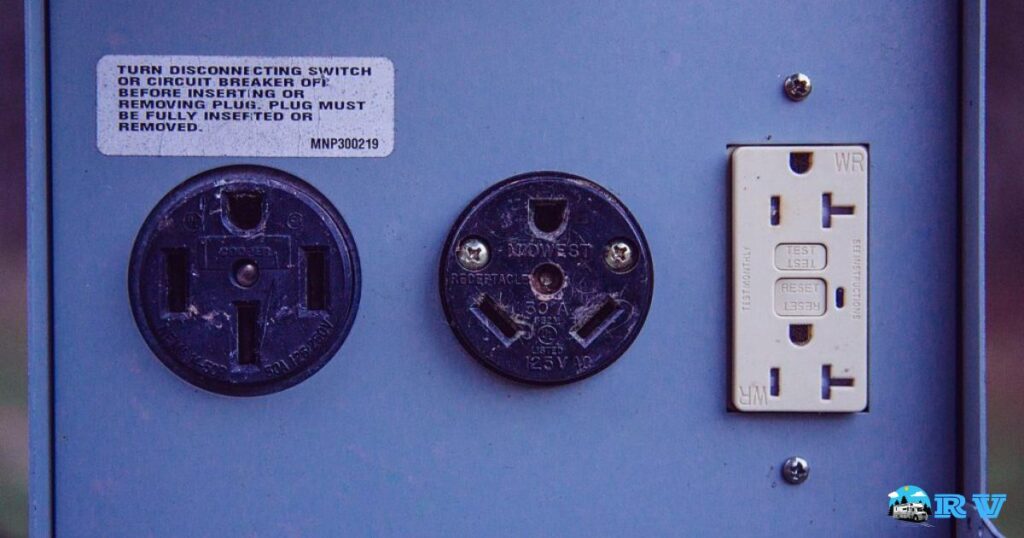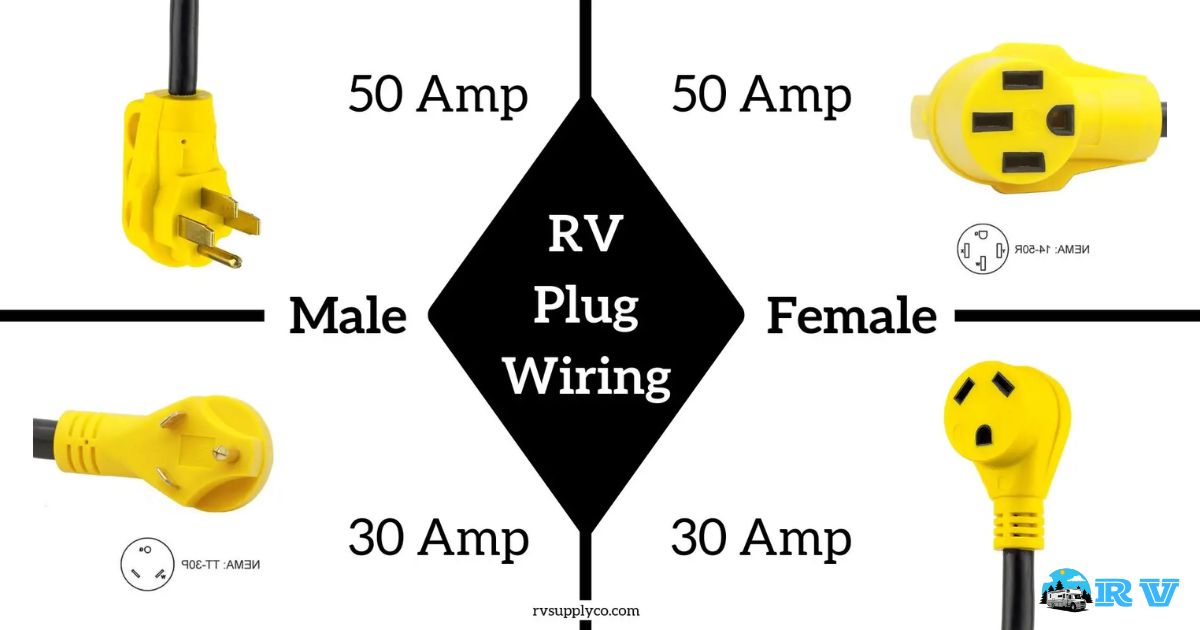Wiring up a 50 amp RV plug involves connecting the electrical supply to your RV to provide power. It requires careful attention to safety and the correct wiring setup. This process ensures that your RV has a stable and reliable power source when stationary.
Are you planning a road trip in your RV but concerned about the power supply. Have you ever wondered, how to wire up a 50 amp RV plug? It’s a crucial skill for any RV enthusiast, ensuring your home-on-wheels is always ready for adventure.
The 50 amp RV plug is a standard for larger RVs, offering a higher power capacity than the 30 amp plug. It typically involves four wires: two hot wires, one neutral, and one ground. Correct wiring is essential for safety and to avoid damage to your RV’s electrical system.
Understanding the Basics of a 50 Amp RV Plug
Wiring a 50 amp RV plug is integral to using your RV’s electrical system. This plug is designed to handle more power than a standard 30 amp RV plug. It’s typically used for larger RVs with more appliances and electrical needs. Understanding how it works is the first step in ensuring a safe and efficient setup.
The 50 amp plug differs from smaller plugs with its four-prong design. It includes two 120-volt hot wires, a neutral wire, and a ground wire. This configuration doubles the available power, allowing for a range of appliances to operate simultaneously.
Safety Precautions for Wiring a 50 Amp RV Plug
Safety is paramount when dealing with electrical installations. Always disconnect your RV from any power source before beginning. Wear protective gear like gloves and safety glasses. Additionally, ensure the area is dry to avoid electrical hazards.
It’s also crucial to use the right tools and materials. This prevents accidents and ensures a reliable connection. Familiarize yourself with your RV’s electrical system and consult the manufacturer’s manual. If in doubt, it’s always safer to consult a professional electrician.
Tools and Materials Needed for Installation
For a successful installation, you’ll need specific tools and materials. Here’s a table summarizing the essentials:
| Tool/Material | Purpose |
| Wire strippers | To strip the insulation off the wires |
| Screwdriver set | For securing connections |
| Electrical tape | To insulate and protect connections |
| 50 amp RV plug | The main component for connection |
| Wire nuts | For securing wire connections |
| Voltage tester | To ensure safety before working |
Each of these plays a vital role in the installation process. For example, wire strippers are crucial for preparing the wires for connection, while a voltage tester ensures the safety of the environment.
Guide to Wiring a 50 Amp RV Plug

Wiring a 50 amp RV plug is a straightforward task that involves a series of steps to ensure a safe and efficient connection. This guide provides a concise and easy-to-follow process:
Safety First: Turn off the power supply to avoid any electrical hazards.
Gather Materials: Obtain a 50 amp RV plug, wire strippers, screwdriver, and appropriate gauge wiring.
Strip Wires: Carefully strip the insulation from the ends of the wires.
Identify Terminals: Locate the hot, neutral, and ground terminals on the RV plug.
Connect Hot Wires: Attach the red and black wires to the hot terminals, ensuring a secure fit.
Secure Neutral Wire: Connect the white wire to the neutral terminal.
Attach Ground Wire: Fasten the green wire to the ground terminal.
Final Check: Ensure all connections are tight and secure before turning the power back on.
Troubleshooting Common Issues in 50 Amp RV Plug Wiring
If your RV’s power isn’t functioning correctly after installation, there are a few common issues to check. First, ensure all connections are tight and secure. Loose connections can cause power interruptions and are a safety hazard.
Another common issue is incorrect wiring. Double check that each wire is connected to the correct terminal. Miswiring can lead to power failures and even damage your RV’s electrical system. If problems persist, consult a professional electrician.
Maintenance Tips for Your 50 Amp RV Electrical System
Regular maintenance is key to a reliable RV electrical system. Inspect your 50 amp plug and cord regularly for signs of wear or damage. Look for frayed wires, loose connections, or corrosion. These can all lead to electrical failures.
Also, keep the plug and its surroundings clean and dry. Moisture and dirt can cause short circuits and corrosion. Ensuring your RV plug is well-maintained extends its lifespan and ensures your safety.
Understanding Electrical Codes and Standards for RV Wiring
Familiarizing yourself with local electrical codes and standards is crucial. These regulations ensure that your RV’s electrical system is safe and compliant. They can vary by location, so it’s important to understand the specific requirements for your area.
Electrical codes cover aspects like wire size, grounding methods, and proper installation techniques. Non-compliance can lead to safety risks and legal issues. When in doubt, consult a licensed electrician who is familiar with these codes and standards.
Enhancing RV Power Upgrading to a 50 Amp System
Upgrading to a 50 amp system can significantly enhance your RV experience. It allows for more appliances to be used simultaneously, making your RV more comfortable and convenient. This upgrade is especially beneficial for larger RVs or those looking to add more electrical amenities.
Upgrading to a 50 amp RV on a 30 amp electrical system involves more than just changing the plug. It may require modifications to your RV’s electrical system, including wiring and circuit breakers. It’s important to consider the full scope of the upgrade and seek professional assistance if needed.
FAQs
What Is Needed to Wire a 50 Amp RV Plug?
A 50 amp RV plug requires a 50 amp breaker, 6/3 gauge wire, a 14-50R receptacle, and proper grounding.
How Do I Connect the Wires to a 50 Amp RV Receptacle?
Connect the red and black wires to the brass terminals, the white wire to the silver terminal, and the green or bare wire to the green grounding screw.
Can I Install a 50 Amp RV Plug Myself?
Yes, you can install it yourself, but it’s recommended to have knowledge of electrical systems or consult a professional electrician for safety.
Conclusion
Wiring a 50 amp RV plug is a valuable skill for any RV owner. It ensures that your vehicle is powered correctly and safely. By following the guidelines and safety measures discussed, you can confidently tackle this task. Remember, accuracy in wiring and regular maintenance are key to a smoothly running RV electrical system.
If you ever feel uncertain during the process, don’t hesitate to consult a professional. Upgrading and maintaining your RV’s electrical system not only enhances your travel experience but also ensures your safety on the road. Embrace the journey with the assurance that your RV is well-equipped and ready for adventure.











